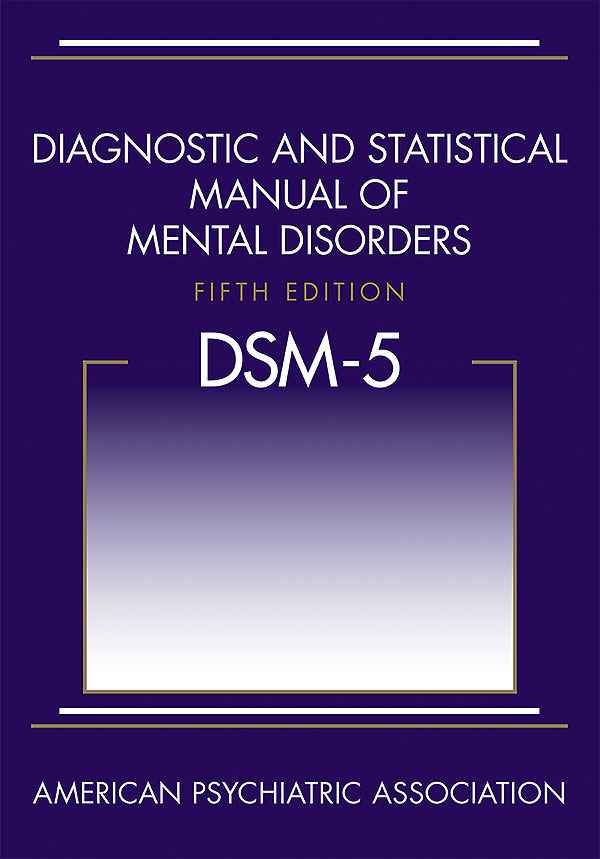Related Research Articles

Bipolar I disorder is a type of bipolar spectrum disorder characterized by the occurrence of at least one manic episode, with or without mixed or psychotic features. Most people also, at other times, have one or more depressive episodes, and all experience a hypomanic stage before progressing to full mania.

The Diagnostic and Statistical Manual of Mental Disorders is a publication by the American Psychiatric Association (APA) for the classification of mental disorders using a common language and standard criteria.
Paraphilia is the experience of intense sexual arousal to atypical objects, situations, fantasies, behaviors, or individuals.

Borderline personality disorder (BPD), also known as emotionally unstable personality disorder (EUPD), is a personality disorder characterized by a long-term pattern of unstable interpersonal relationships, distorted sense of self, and strong emotional reactions. Those affected often engage in self-harm and other dangerous behaviors, often due to their difficulty with returning their emotional level to a healthy or normal baseline. They may also struggle with a feeling of emptiness, fear of abandonment, and detachment from reality. Symptoms of BPD may be triggered by events considered normal to others. BPD typically begins by early adulthood and occurs across a variety of situations. Substance use disorders, depression, and eating disorders are commonly associated with BPD. Some 8 to 10% of people affected with the disorder may die by suicide. The disorder is often stigmatized in both the media and the psychiatric field and as a result is often underdiagnosed.
Histrionic personality disorder (HPD) is defined by the American Psychiatric Association as a personality disorder characterized by a pattern of excessive attention-seeking behaviors, usually beginning in early childhood, including inappropriate seduction and an excessive desire for approval. People diagnosed with the disorder are said to be lively, dramatic, vivacious, enthusiastic, extroverted and flirtatious.
Narcissistic personality disorder (NPD) is a mental disorder characterized by a life-long pattern of exaggerated feelings of self-importance, an excessive craving for admiration, and a diminished ability to empathize with others' feelings. Narcissistic personality disorder is one of the eleven sub-types of the broader category known as personality disorders.
Antisocial personality disorder is a personality disorder characterized by a long-term pattern of disregard for, or violation of, the rights of others as well as a difficulty sustaining long-term relationships. A weak or nonexistent conscience is often apparent, as well as a history of rule-breaking that can sometimes lead to law-breaking, a tendency towards substance abuse, and impulsive and aggressive behaviour. Antisocial behaviors often have their onset before the age of 8, and in nearly 80% of ASPD cases, the subject will develop their first symptoms by age 11. The Prevalence of ASPD peaks in people age 24 to 44 years old, and often decreases in people age 45 to 64 years. In the United States, the rate of antisocial personality disorder in the general population is estimated between 0.5 and 3.5 percent. However, settings can greatly influence the prevalence of ASPD. In a study by Donald W. Black MD, a random sampling of 320 newly incarcerated offenders found ASPD was present in over 35 percent of those surveyed.

Obsessive–compulsive personality disorder (OCPD) is a cluster C personality disorder marked by an excessive need for orderliness, neatness, and perfectionism. Symptoms are usually present by the time a person reaches adulthood, and are visible in a variety of situations. The cause of OCPD is thought to involve a combination of genetic and environmental factors, namely problems with attachment.
Intermittent explosive disorder is a behavioral disorder characterized by explosive outbursts of anger and/or violence, often to the point of rage, that are disproportionate to the situation at hand. Impulsive aggression is not premeditated, and is defined by a disproportionate reaction to any provocation, real or perceived. Some individuals have reported affective changes prior to an outburst, such as tension, mood changes, energy changes, etc.
Theodore Millon was an American psychologist known for his work on personality disorders.

The classification of mental disorders is also known as psychiatric nosology or psychiatric taxonomy. It represents a key aspect of psychiatry and other mental health professions and is an important issue for people who may be diagnosed. There are currently two widely established systems for classifying mental disorders:

The Diagnostic and Statistical Manual of Mental Disorders, Fifth Edition (DSM-5), is the 2013 update to the Diagnostic and Statistical Manual of Mental Disorders, the taxonomic and diagnostic tool published by the American Psychiatric Association (APA). In the United States, the DSM serves as the principal authority for psychiatric diagnoses. Treatment recommendations, as well as payment by health care providers, are often determined by DSM classifications, so the appearance of a new version has practical importance. The DSM-5 is the only DSM to use an Arabic numeral instead of a Roman numeral in its title, as well as the only living document version of a DSM.

Borderline intellectual functioning, also called borderline mental retardation, is a categorization of intelligence wherein a person has below average cognitive ability, but the deficit is not as severe as intellectual disability. It is sometimes called below average IQ (BAIQ). This is technically a cognitive impairment; however, this group may not be sufficiently mentally disabled to be eligible for specialized services.
Personality disorders (PD) are a class of mental disorders characterized by enduring maladaptive patterns of behavior, cognition, and inner experience, exhibited across many contexts and deviating from those accepted by the individual's culture. These patterns develop early, are inflexible, and are associated with significant distress or disability. The definitions may vary somewhat, according to source, and remain a matter of controversy. Official criteria for diagnosing personality disorders are listed in the fifth chapter of the International Classification of Diseases (ICD) and in the American Psychiatric Association's Diagnostic and Statistical Manual of Mental Disorders (DSM).
Personality disorder not otherwise specified is a diagnostic classification for some DSM-IV Axis II personality disorders not otherwise listed in DSM-IV.
Cyclothymia, also known as cyclothymic disorder, is a mental and behavioural disorder that involves numerous periods of symptoms of depression and periods of symptoms of elevated mood. These symptoms, however, are not sufficient to indicate a major depressive episode or a manic episode. Symptoms must last for more than one year in children and two years in adults.
In personality pathology, dimensional models of personality disorders conceptualize personality disorders as quantitatively rather than qualitatively different from normal personality. They consist of extreme, maladaptive levels of certain personality characteristics. Within the context of personality psychology, a "dimension" refers to a continuum on which an individual can have various levels of a characteristic, in contrast to the dichotomous categorical approach in which an individual does or does not possess a characteristic. According to dimensional models personality disorders are classified according to which characteristics are expressed at which levels. This stands in contrast to the traditional categorical models of classification, which are based on the boolean presence or absence of symptoms and do not take into account levels of expression of a characteristic or the presence of any underlying dimension.
Sexual sadism disorder is the condition of experiencing sexual arousal in response to the extreme pain, suffering or humiliation of others. Several other terms have been used to describe the condition, and the condition may overlap with other conditions that involve inflicting pain. It is distinct from situations in which consenting individuals use mild or simulated pain or humiliation for sexual excitement. The words sadism and sadist are derived from Marquis de Sade.
Sexual masochism disorder (SMD) is the condition of experiencing recurring and intense sexual arousal in response to enduring moderate or extreme pain, suffering, or humiliation. The Diagnostic and Statistical Manual (DSM-5) of the American Psychiatric Association indicates that a person may have a masochistic sexual interest but that the diagnosis of sexual masochism disorder would only apply to individuals who also report psychosocial difficulties because of it.
Passive–aggressive personality disorder, also called negativistic personality disorder, is characterized by procrastination, covert obstructionism, inefficiency and stubbornness. The current version of the Diagnostic and Statistical Manual of Mental Disorders no longer uses this phrase or label, and it is not one of the ten listed specific personality disorders. The previous edition, the revision IV (DSM-IV) describes passive–aggressive personality disorder as a proposed disorder involving a "pervasive pattern of negativistic attitudes and passive resistance to demands for adequate performance" in a variety of contexts.
References
- American Psychiatric Association. (2000). Diagnostic and statistical manual of mental disorders (text revision, 4th ed.). Washington, DC: American Psychiatric Association.
- Millon, T. (1981). Disorders of personality. DSM-III: Axis II. New York, NY: John Wiley.
- Mischel, W., & Shoda, Y. (1995). A cognitive-affective system theory of personality: Reconceptualizing situations, dispositions, dynamics, and invariance in personality structure. Psychological Review, 102(2), 246-268.
- Westen, D. (1995). A clinical-empirical model of personality: Life after the mischelian ice age and the NEO-lithic era. Journal of Personality, 63, 495-524.